Here's how some central Ohio high school baseball teams use pitch communication technology
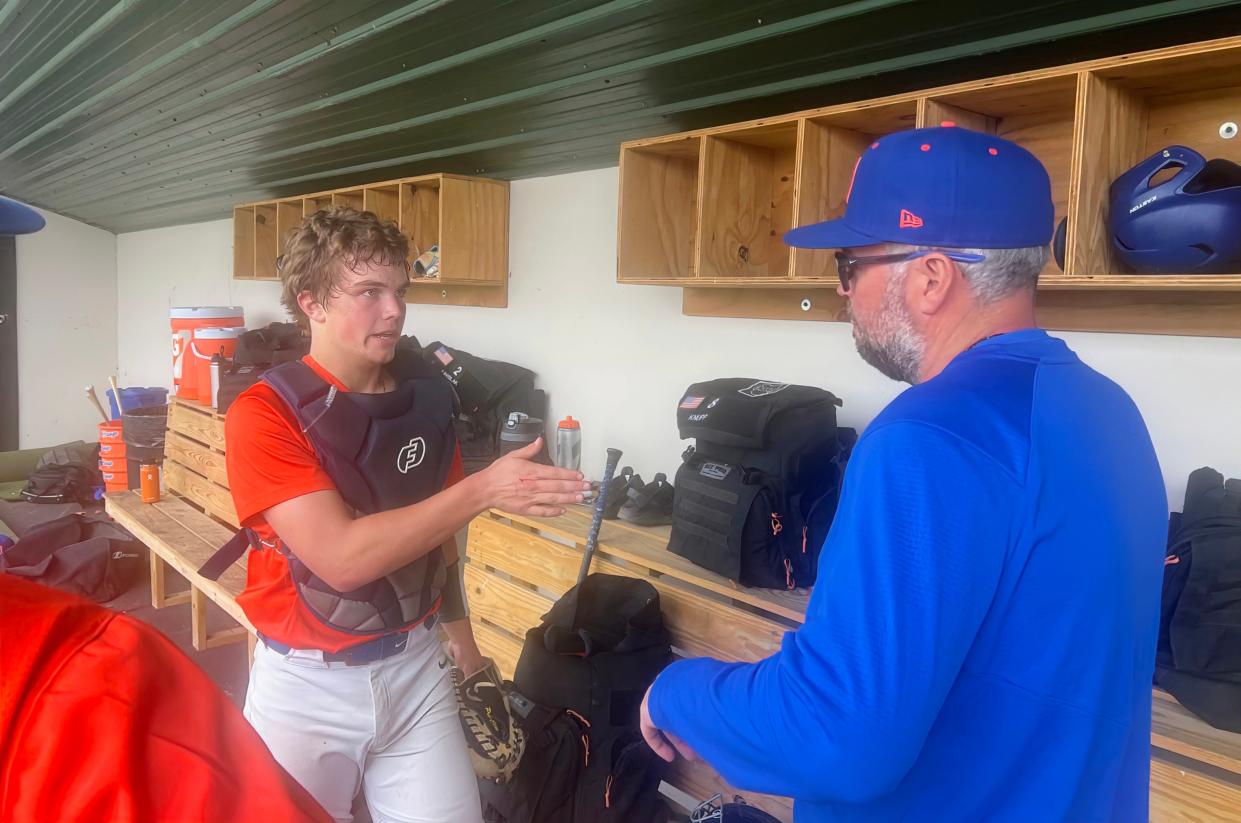
Some new equipment has been introduced at high school baseball fields this season, and it’s putting players in the same ballpark as their major league counterparts.
Although not every team in central Ohio is utilizing the technology, teams are now allowed to use a one-way communication system in which a coach relays pitch calls to his catcher.
The Ohio High School Athletic Association announced last July that the technology would be permitted after its usage was approved by the baseball rules committee of the National Federation of State High School Associations.
A coach is prohibited from communicating with any player in the field besides the catcher and with any player while batting, and the coach must be in the dugout when using the communication device.
The technology offers options such as walkie-talkie and watch band systems. Central Ohio coaches and players say it speeds up play and prevents an opponent from stealing signs that traditionally were relayed from coach to catcher, although a catcher still must drop down finger signs for his pitcher.
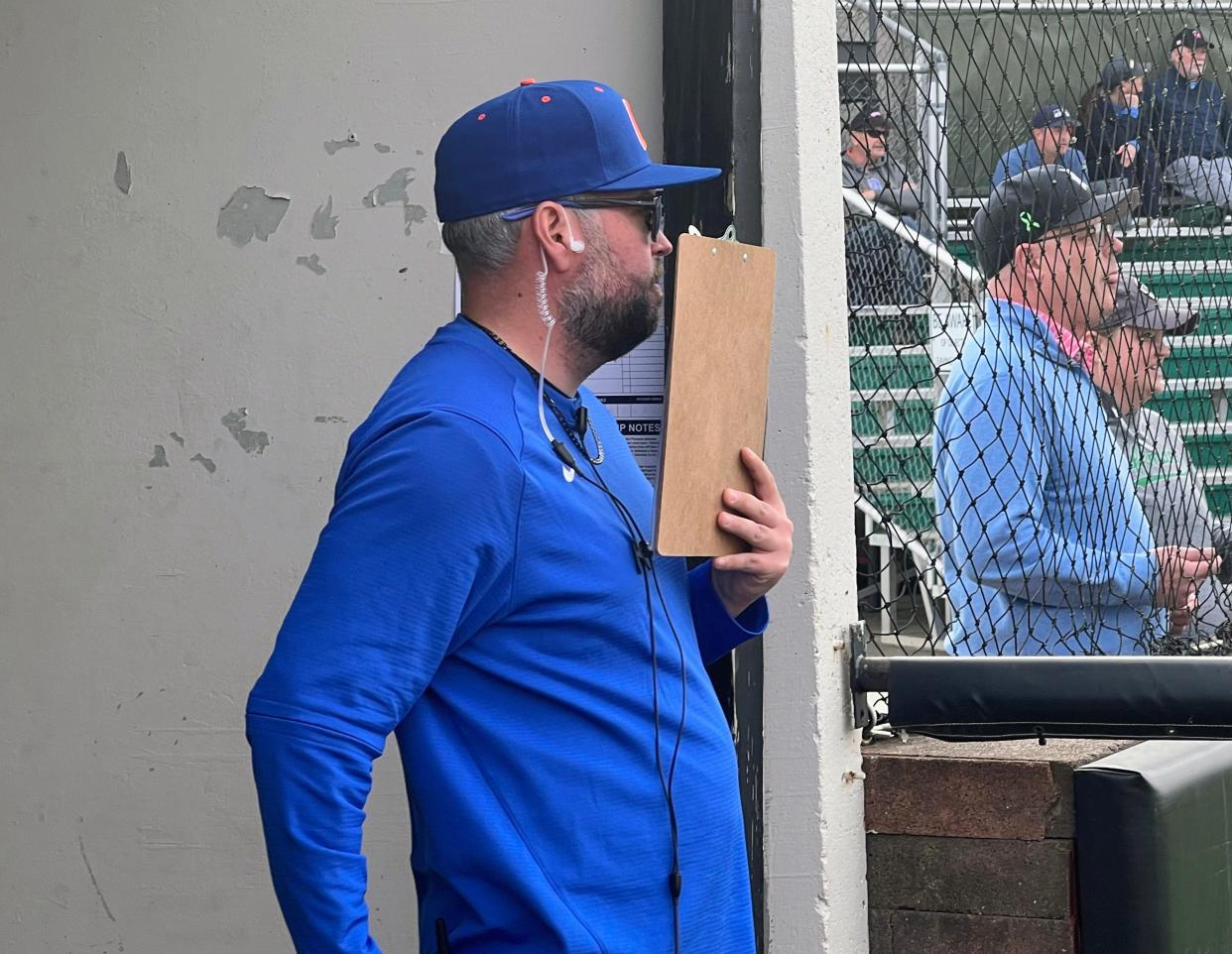
What are the benefits of one-way communication devices in high school baseball?
Olentangy Orange was one of the first programs introduced to the technology and began using a CoachComm walkie-talkie system during practice last season. Coach Tom Marker connects the device to the public address system during practice to help relay instructions to his players in the field.
“It speeds the game along, and it allows you to articulate some things to catchers that you couldn’t do through the old-school wrist band,” Marker said.
Orange pitching coach Zane Bayliss operates the device during games, sharing information with senior catcher Casey Covert, who wears an earpiece.
“Casey is a smart kid and he’s able to articulate things he doesn’t like or what he likes to see improved,” Marker said.
In addition to improving pace of play and preventing opponents from stealing signs, Bayliss said the technology also enables him to communicate strategy to Covert.
“I can talk to Casey before the pitch,” Bayliss said. “I can tell him there’s a chance they’re running (on the pitch). He can call timeout and I can tell him what to do in talking to the pitcher instead of me going out there. Sometimes they handle it better.”
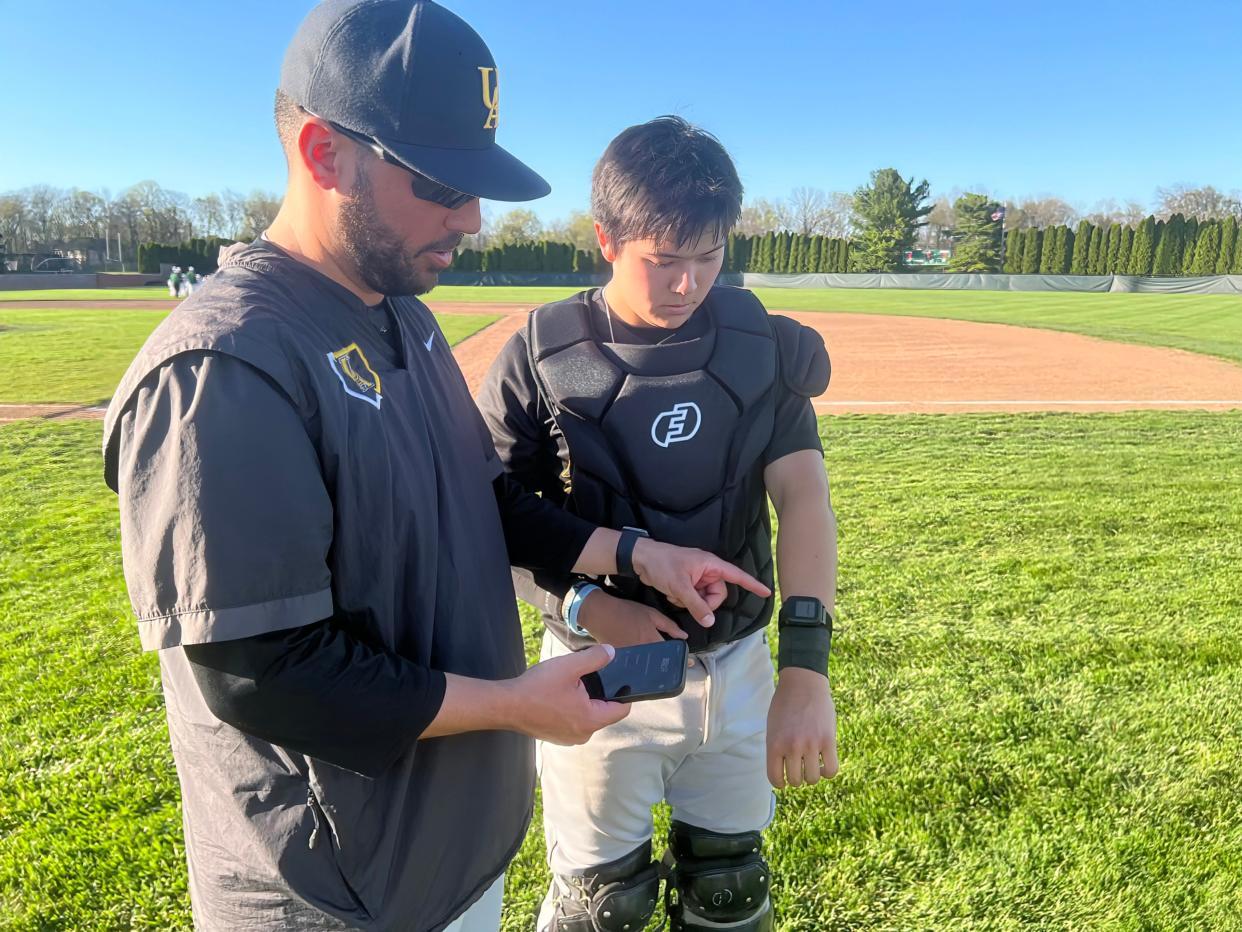
High school baseball's communication system differs from MLB
In MLB's PitchCom system, which debuted in 2022, catchers often tuck the device behind a shin guard and pitchers often put them inside their cap.
Upper Arlington used a walkie-talkie system in the preseason but has since switched to a GoRout watch band. Pitching coach Joseph Juza uses a phone or tablet to relay messages to a watch worn by his catcher.
“It’s a lot easier on our pitching coach to get calls in and then our catcher relays it to our pitcher much, much faster,” head coach Sam Clark said. “Pace of play has been the biggest thing.”
Senior Duke Lashutka and junior Mark Lee have split time behind the plate for UA, and both are pleased with the technology.
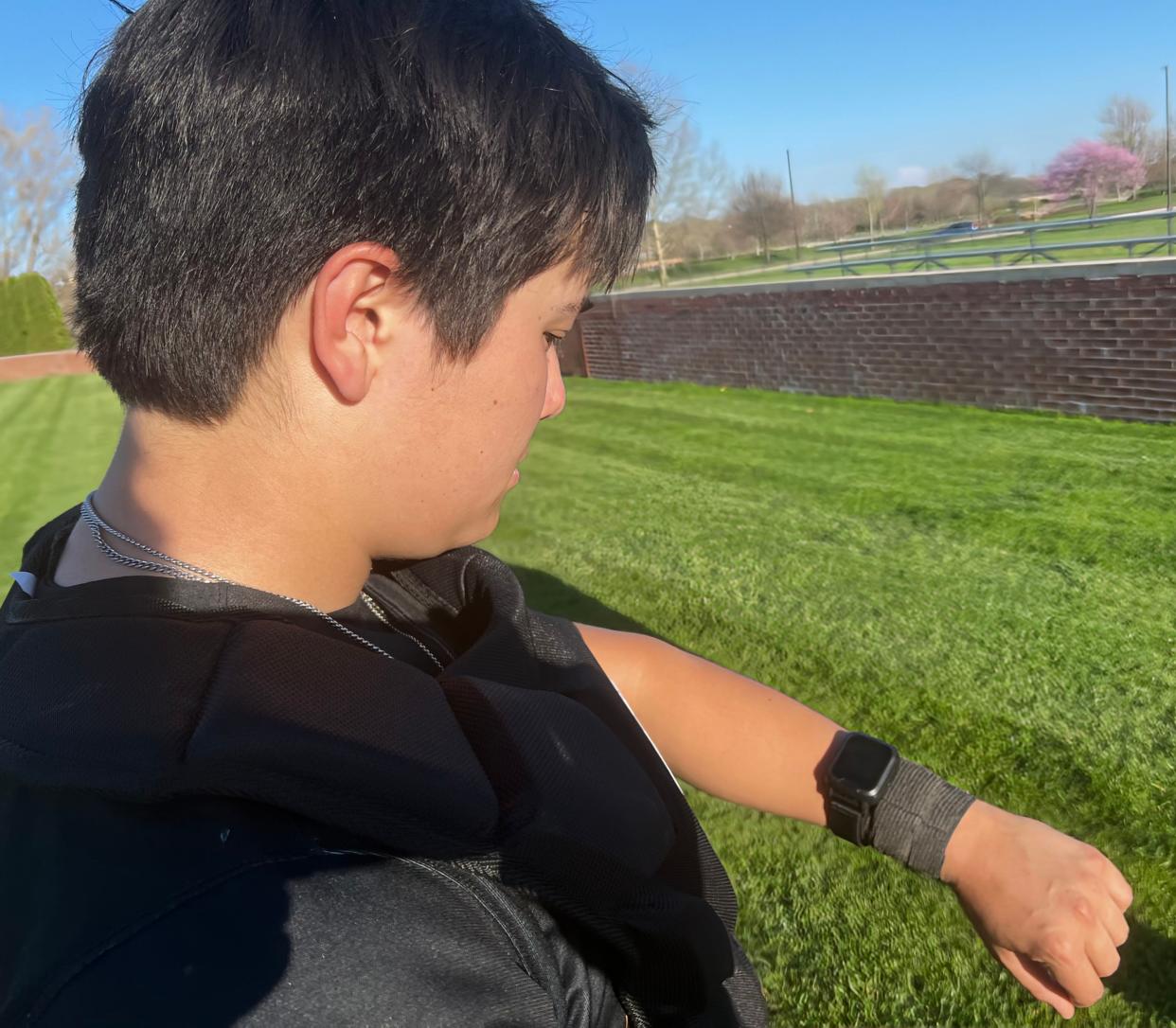
“Last year, we used a lot more hand signals,” Lashutka said. “This has been a lot more efficient just getting the sign in quick from the dugout. It leaves out the possibility for them to steal the sign because they can’t see it. There’s no sign to steal because it’s on your wrist.”
Dublin Coffman coach Corey Gould said his players have embraced the Porta Phone walkie-talkie system.
“There’s less miscommunication, which I think is helpful,” Gould said. “It helps the guys because they don’t have to think quite so much. There were some growing pains. We started using them in practice so as a coaching staff we could get used to how it was going to work. We’ve got it figured out. We really like it as a team.”
Pitching coach Jameson Jacobs relays information to sophomore catcher Drew Waiti, who wears an earpiece.
“I’m not looking down at my wrist every time or even doing hand signals,” Waiti said. “It’s a lot less on my brain just hearing it and a lot easier on the coaches as well.”
Jacobs also can call for pitchouts and pickoff attempts.
“It opens up our arsenal, which is nice,” Gould said.
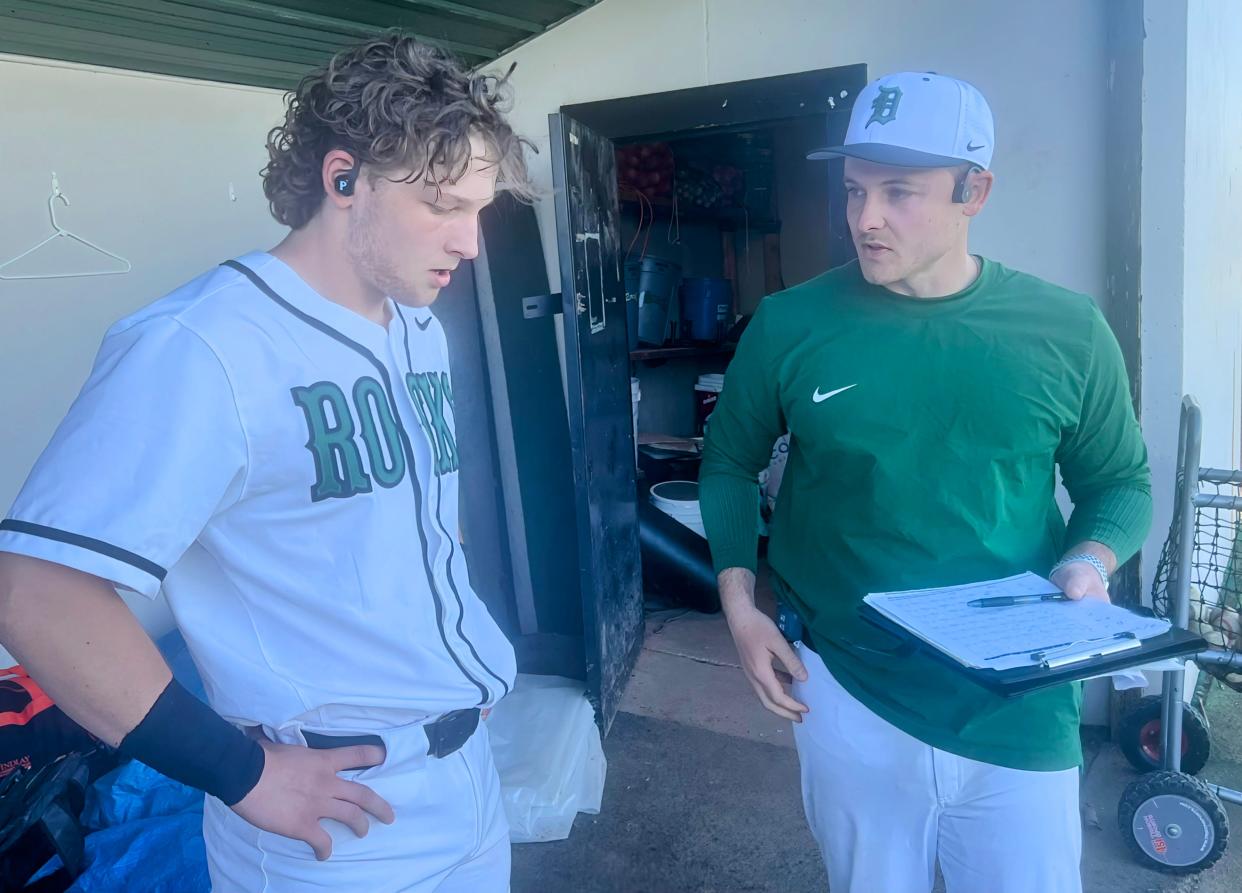
The Coffman and UA systems were purchased through baseball booster club funds. Orange’s four CoachComm systems were donated, Marker said.
At Hilliard Davidson, the Wildcats have opted not to use a communication system this season, instead relying on three-year starting catcher Patrick Sherman.
“I’ve been here three years and I was pretty confident in my ability to call games,” he said. “I really didn’t feel a need to do something that really wasn’t needed. This is the trust they have in me.”
Coach Justin Swallie said his team will likely use a communication system after Sherman, a senior, graduates.
“Patrick is basically another coach behind the plate,” Swallie said. “He does all those calls. Obviously, we talk with our pitchers in between innings. We just felt with Patrick it wasn’t super necessary this year. We’ve been fortunate to have a three-year guy back there that’s going to play at John Carroll next year and knows the game and understands our staff and works with our pitchers in the offseason.”
This article originally appeared on The Columbus Dispatch: Central Ohio baseball teams embrace new pitch communication tech
